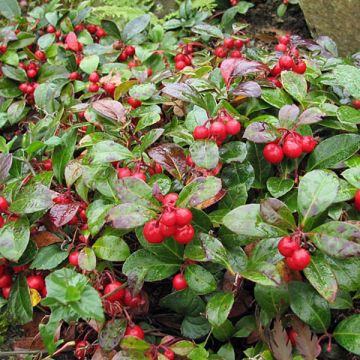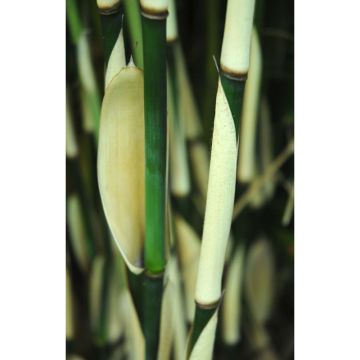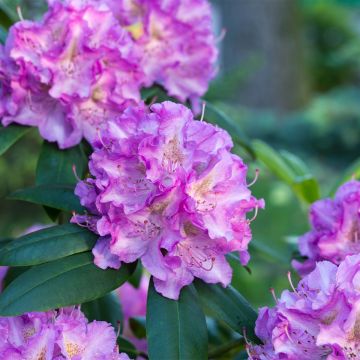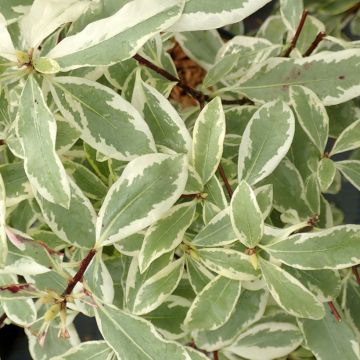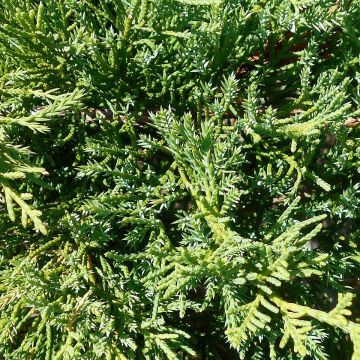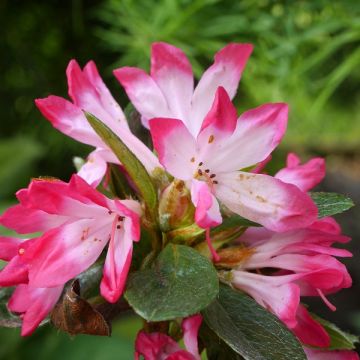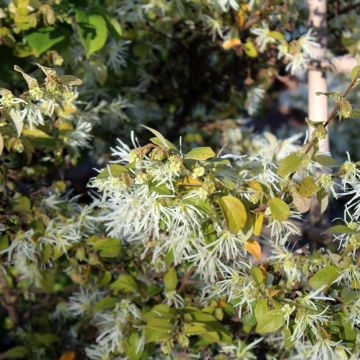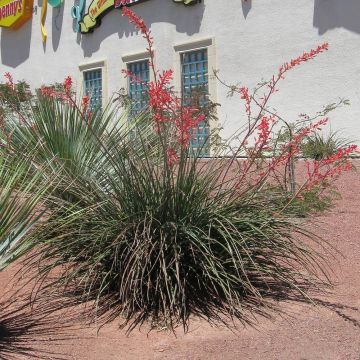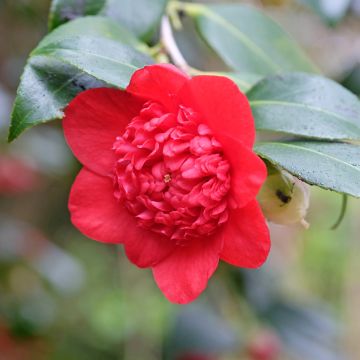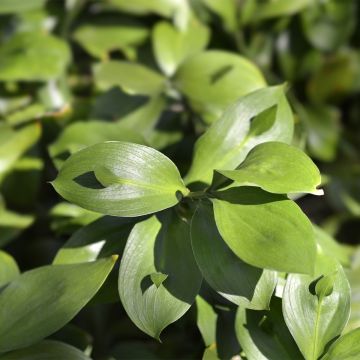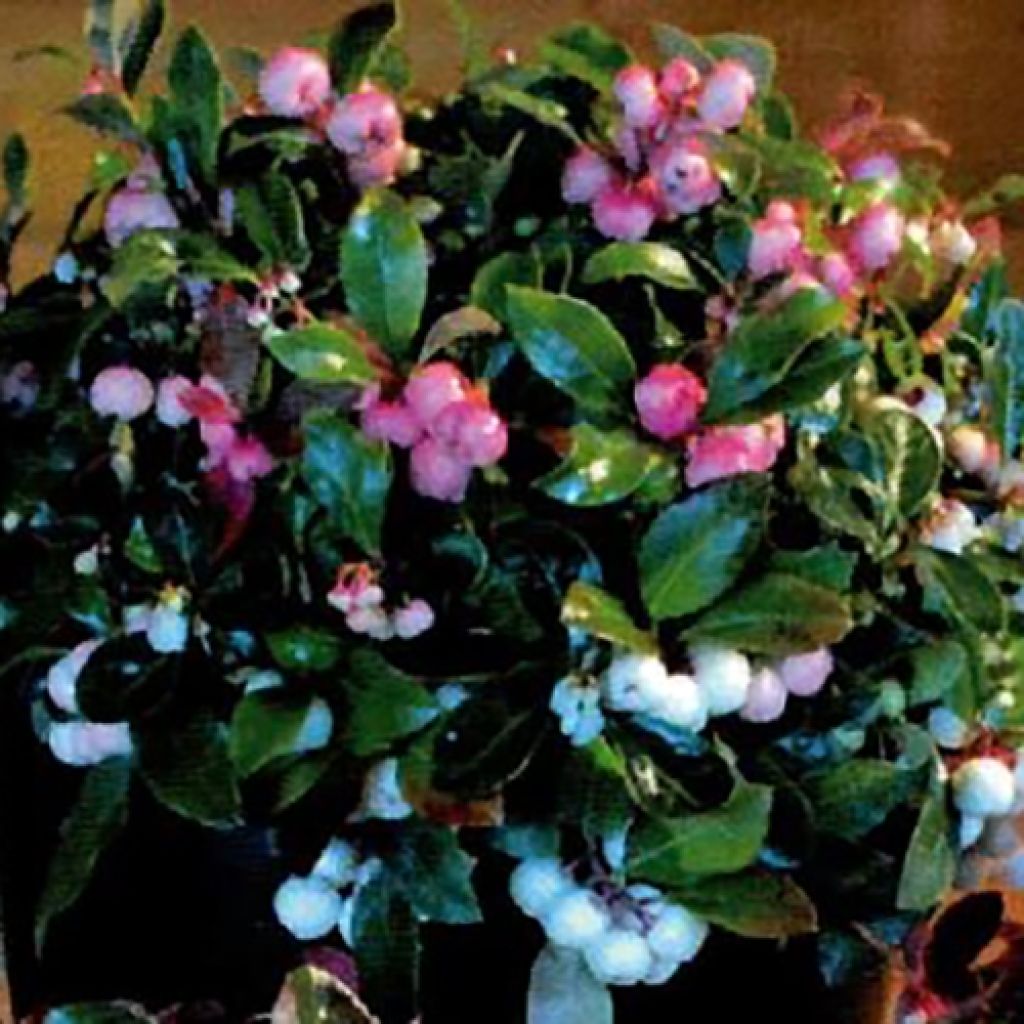

Gaultheria procumbens Color Surprise
Gaultheria procumbens Color Surprise - American Wintergreen
Gaultheria procumbens Color Surprise Slagmoer18
American Wintergreen, Checkerberry
This plant carries a 24 months recovery warranty
More information
We guarantee the quality of our plants for a full growing cycle, and will replace at our expense any plant that fails to recover under normal climatic and planting conditions.
From €7.90 for pickup delivery and €6.90 for home delivery
Express home delivery from €8.90.
Does this plant fit my garden?
Set up your Plantfit profile →
Description
The Gaultheria procumbens Color Surprise is a variety of prostrate Gaultheria selected for its winter tricolour fruiting, white, pink and red, which is particularly decorative. It is a small, prostrate bush with very dark evergreen foliage, used in heather beds or acidic soils, but also to create decorative pots in winter.
The Gaultheria Color Surprise 'Slagmoer18' is a recent horticultural selection dating back to 2018. Native to North America, its ancestor Gaultheria procumbens is common in the acidic undergrowth of large coniferous and deciduous forests in Canada. Perfectly hardy, resistant to drought once established, this species does not tolerate limestone. 'Color Surprise' is distinguished mainly by its fruits of variable colour and slightly larger size. The slow-growing bush remains very small, not exceeding 20 cm (7.9 in) in height and 30-40 cm (11.8-15.7 in) in width. A slightly trailing underground stem produces new small bushes over time, slowly colonizing the soil in the free spaces between stones or other plants. The dense foliage is composed of very small, leathery and glossy dark green leaves that turn purple in autumn as temperatures drop. Flowering takes place in summer, from July to August. It takes the form of small, waxy white bell-shaped flowers that appear in the axils of the leaves. Pollinated by insects, they then produce round and shiny berries that change from white to pink and then to bright red. All three colours are present on the plant at the same time. This fruiting is sought after by some birds.
The Gaultheria procumbens Color Surprise is perfect for filling your heather beds as a ground cover at the base of your heathers, azaleas, camellias, Pieris, or hydrangeas, for example. Its evergreen foliage and small, colourful bell-like berries fill the empty spaces left by other plants during winter.
Be careful not to let children play with its attractive berries because, even though they have therapeutic benefits, an improper dosage of medicinal plants can be toxic.
Plant habit
Flowering
Foliage
Botanical data
Gaultheria
procumbens
Color Surprise Slagmoer18
Ericaceae
American Wintergreen, Checkerberry
Cultivar or hybrid
Other Gaultheria
Planting and care
Plant Gaultheria procumbens Color Surprise in acidic compost, or at a push in neutral soil, but be wary of limestone which it really doesn't like. It is a bush accustomed to shade or partial shade. Mulching with pine bark or needles will be appreciated to keep the necessary moisture during its first year. After planting, thoroughly water with non-limestone water to eliminate air pockets, then continue to water regularly throughout the first summer. In the long term, add heath soil or turf around its base each year. As for pruning, restrict the spread to the area you have allocated for your Gaultheria by cutting back any excess growth, taking care not to damage the branches.
Planting period
Intended location
Care
This item has not been reviewed yet - be the first to leave a review about it.
Evergreen shrubs
Haven't found what you were looking for?
Hardiness is the lowest winter temperature a plant can endure without suffering serious damage or even dying. However, hardiness is affected by location (a sheltered area, such as a patio), protection (winter cover) and soil type (hardiness is improved by well-drained soil).

Photo Sharing Terms & Conditions
In order to encourage gardeners to interact and share their experiences, Promesse de fleurs offers various media enabling content to be uploaded onto its Site - in particular via the ‘Photo sharing’ module.
The User agrees to refrain from:
- Posting any content that is illegal, prejudicial, insulting, racist, inciteful to hatred, revisionist, contrary to public decency, that infringes on privacy or on the privacy rights of third parties, in particular the publicity rights of persons and goods, intellectual property rights, or the right to privacy.
- Submitting content on behalf of a third party;
- Impersonate the identity of a third party and/or publish any personal information about a third party;
In general, the User undertakes to refrain from any unethical behaviour.
All Content (in particular text, comments, files, images, photos, videos, creative works, etc.), which may be subject to property or intellectual property rights, image or other private rights, shall remain the property of the User, subject to the limited rights granted by the terms of the licence granted by Promesse de fleurs as stated below. Users are at liberty to publish or not to publish such Content on the Site, notably via the ‘Photo Sharing’ facility, and accept that this Content shall be made public and freely accessible, notably on the Internet.
Users further acknowledge, undertake to have ,and guarantee that they hold all necessary rights and permissions to publish such material on the Site, in particular with regard to the legislation in force pertaining to any privacy, property, intellectual property, image, or contractual rights, or rights of any other nature. By publishing such Content on the Site, Users acknowledge accepting full liability as publishers of the Content within the meaning of the law, and grant Promesse de fleurs, free of charge, an inclusive, worldwide licence for the said Content for the entire duration of its publication, including all reproduction, representation, up/downloading, displaying, performing, transmission, and storage rights.
Users also grant permission for their name to be linked to the Content and accept that this link may not always be made available.
By engaging in posting material, Users consent to their Content becoming automatically accessible on the Internet, in particular on other sites and/or blogs and/or web pages of the Promesse de fleurs site, including in particular social pages and the Promesse de fleurs catalogue.
Users may secure the removal of entrusted content free of charge by issuing a simple request via our contact form.

































